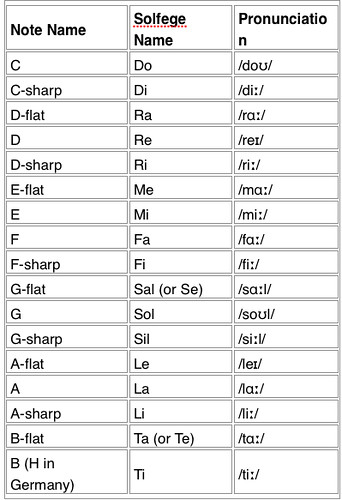
Kodaly's modification allowed children to see the actual height and depth of the pitches. The solfege hand sign system was first developed by John Curwen and then modified by Kodály to add chromatic alterations together with upward and downward head movements.

SOLFEGE CHROMATIC FULL
This book presents the full range of solfege hand signs, both diatonic and chromatic.ĭo, di, re, ri, me, mi, fa, fi, se, sol, si, le, la, li, te, ti, do A singer makes a specified shape with their hand to represent each tone of the seven-note solfege system. By associating hearing and reading of pitches with playing/singing, they establish a physical association between these elements. Solfege (or Sol-fa), Glover, Curwen, and Kodaly hand signs are used in music to represent the different pitches of a tonal scale. You can post these cut-outs on the wall and your children can understand and use them on their own.

Each note here has its own page in the book. The size of the cut-out will be 8.5x11 inches. Don't worry too much about this chart if you're just getting started with solfege and are looking for the basics only.This is a set of chromatic hand signs (Glover - Curwen - Kodaly) perfect for music teachers and choir directors.Ĭut out the gestures charts and use them as a visual aid for yourself, your kids or your students. This will cover every note possible in a scale that is possible, including accidental notes. Here's an advanced scale that takes into account each note in a chromatic scale.
SOLFEGE CHROMATIC HOW TO
This works well for groups of singers and young students in voice lessons that are learning how to sing through scales with a professional teacher. You will need to also refer to the chromatic solfege chart below to account for accidentals.Ĭheck out this chart if you're looking to take things to the next level with hand signals. If you use fixed do, you will stick with these notes no matter what key you're singing in. The most common music scale is the key of C major. Here's a chart you can use to get used to seeing how the scale matches with a specific key. Most people use moveable do since it's easier to grasp with a variety of different song keys. If not, you should assume that you are starting with C as the first note of the scale. Note that if you're using "movable do", the first note ( tonic note) in this scale can be whatever note you want it to be. This is a basic chart that you can start with as a beginner. Related Post: Why Are There Only 7 Notes In An Octave? Simple Solfege Chart If you are in "movable do, " your "do" can be C, C#, F, Bb, or any other starting note. That means if you are singing in a key that isn't C, you will need to use chromatic solfege from the last chart below. Note: In the "fixed do" method, your "do" will always be C.
SOLFEGE CHROMATIC PDF
You can download each chart as a PDF for free, in addition to studying it here on my site. It's time to impress your music teachers and your future fans with your knowledge! Check out these charts I've made below that can help you learn and memorize your solfege.

The good thing is that no matter if you're using "fixed do" or "movable do", the solfege names and hand signals remain the same and can help you with all types of scales from major, to minor, to Mixolydian. Don't feel bad for looking for a cheat sheet solfege can be difficult to learn when you're a beginner just getting into the music world.


 0 kommentar(er)
0 kommentar(er)
